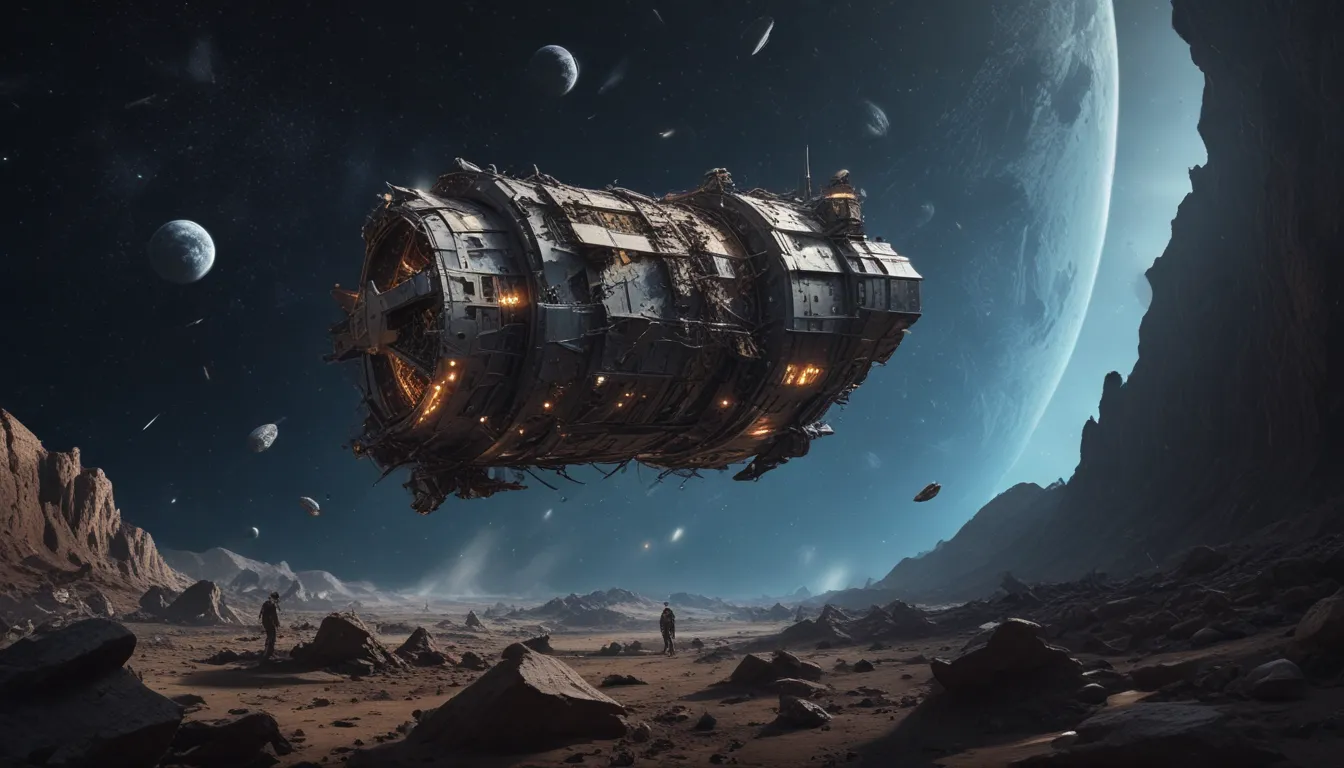The pictures we use in our articles might not show exactly what the words say. We choose these pictures to make you interested in reading more. The pictures work together with the words but don’t take their place. The words still tell you the important facts.
Space debris, also known as orbital debris or space junk, presents a growing concern for space agencies and scientists globally. With millions of objects ranging in size from tiny pieces to large satellites orbiting Earth, the risk of collisions and damage to essential spacecraft is significant. In response, space agencies and private companies are actively working on missions and technologies to remove this debris from space.
The Growing Threat of Space Debris
In recent years, the accumulation of space debris has become a pressing concern for space agencies worldwide. With thousands of defunct satellites, spent rocket stages, and various debris orbiting the Earth, the need for space debris removal missions is more critical than ever. The increasing presence of space debris poses a significant risk to functioning satellites and manned missions.
Building a Cleaner Space Environment
Space debris removal missions aim to mitigate the risks posed by space junk. By actively removing debris from orbit or implementing strategies to deorbit defunct satellites, these missions contribute to the long-term sustainability of space activities. These efforts are crucial in ensuring the safety of space missions and the sustainability of space exploration.
Innovative Technologies at Work
Space agencies are developing cutting-edge technologies to tackle the challenge of space debris removal. From robotic arms and nets to harpoons and lasers, innovative tools are being designed to capture, stabilize, and dispose of space junk. These technologies are essential for locating, tracking, and safely removing debris without causing further damage.
Cooperation Amongst Space Agencies
Space debris removal missions often involve collaboration between different space agencies and organizations. Sharing resources, expertise, and data allows for optimized solutions and increased effectiveness in managing the space debris problem. International cooperation and collaboration are crucial in developing strategies and implementing missions to address the problem of space debris.
The First Successful Debris Removal Mission
In 2018, the European Space Agency (ESA) successfully conducted the first-ever demonstration of debris removal technology. The mission, called RemoveDEBRIS, showcased a range of techniques, including net and harpoon-based capture, to remove space debris from orbit. This successful mission highlighted the importance of innovative technologies in space debris removal efforts.
Active and Passive Debris Removal
There are two primary approaches to space debris removal: active and passive. Active removal involves actively capturing and removing debris using spacecraft equipped with specialized technologies. Passive removal relies on deorbit strategies that bring defunct satellites and debris back into Earth’s atmosphere for controlled reentry and burn-up. These approaches are essential in effectively removing space debris from orbit.
The Role of CubeSats in Debris Removal
CubeSats, small and cost-effective satellites, have been utilized in space debris removal missions. These miniaturized spacecraft can be deployed to investigate and test new technologies for capturing and removing debris, paving the way for future large-scale missions. CubeSats play a vital role in advancing debris removal technologies and strategies.
Laser-based Debris Tracking
Laser-based systems have proven effective in tracking and monitoring space debris. By precisely measuring the distance to debris objects, these laser systems can improve collision avoidance and enhance the accuracy of debris removal missions. Laser-based technologies are essential for ensuring the safety and effectiveness of space debris removal efforts.
Cleaning Up Specific Debris Fields
Some space debris removal missions target specific debris fields, such as the crowded Low Earth Orbit (LEO) region. By focusing efforts on the most congested areas, these missions contribute to the overall reduction of space debris and the safety of operational satellites. Targeting specific debris fields is crucial in effectively managing space debris removal efforts.
The Economics of Space Debris Removal
Space debris removal missions not only help mitigate risks but also present economic opportunities. The development of debris removal technologies and services can create new industries and generate jobs in the growing field of space sustainability. These economic opportunities are important for advancing space debris removal efforts and promoting the sustainability of space activities.
International Guidelines and Policies
International guidelines and policies play a crucial role in shaping space debris removal efforts. Organizations like the United Nations and International Telecommunication Union work together to establish regulations and standards that promote responsible space activities and debris mitigation. International cooperation and collaboration are essential in developing effective strategies for addressing the problem of space debris.
The Future of Space Debris Removal
The urgency to address the space debris problem continues to drive research and development in space debris removal missions. With advancements in technology, increasing international collaboration, and a growing awareness of the importance of space sustainability, the future looks promising for cleaner and safer space environments. Ongoing research and development efforts are essential for advancing space debris removal technologies and strategies.
Conclusion
In conclusion, space debris removal missions are crucial for ensuring the sustainability and safety of space exploration. The growing concern about space debris has led to the development of innovative technologies and strategies to mitigate the risks associated with orbital debris. These missions aim to remove defunct satellites, spent rocket stages, and other debris from Earth’s orbit to reduce the chances of collisions and create a more sustainable space environment. By understanding the facts about space debris removal missions, we can appreciate the importance of these efforts in safeguarding our future in outer space.
FAQs
- What is space debris?
Space debris refers to man-made objects that are no longer functional and are orbiting the Earth. This includes defunct satellites, spent rocket stages, fragments, and other materials left over from space missions.
- Why is space debris removal important?
Space debris poses a significant risk to functioning satellites and manned missions. The accumulation of debris increases the chances of collisions, which can lead to further debris creation and the destruction of operational spacecraft. Removing space debris helps ensure the safety of space missions and the sustainability of space exploration.
- How do space debris removal missions work?
Space debris removal missions use various techniques such as robotic arms, harpoons, nets, and lasers to capture and remove debris from orbit. These missions employ advanced technologies and robotics to locate, track, and safely remove debris without causing further damage.
- Who is responsible for space debris removal?
Space debris removal is a shared responsibility among space agencies, governments, and private companies. International cooperation and collaboration are crucial in developing strategies and implementing missions to address the problem of space debris.
- Can space debris be recycled or repurposed?
There are ongoing efforts to explore the possibility of recycling or repurposing space debris. Some components of defunct satellites and space debris could be repurposed for future missions, reducing the need to launch new materials from Earth and minimizing the accumulation of debris.
Discover More About Space Debris
Do you want to learn more about space debris and the efforts to clean up Earth's orbit? Check out our articles on fascinating facts about the challenges and innovations in space debris removal missions. Explore the exciting technology and international collaboration driving the future of space sustainability. Delve into the world of space exploration and the importance of keeping our cosmic backyard clean and safe for future generations. Join us on this journey to explore the wonders of outer space and the remarkable efforts to protect our cosmic environment.
Your Guide to Space Debris Removal Missions
Our commitment to delivering trustworthy and engaging content is at the heart of what we do. Each fact on our site is contributed by real users like you, bringing a wealth of diverse insights and information. To ensure the highest standards of accuracy and reliability, our dedicated editors meticulously review each submission. This process guarantees that the facts we share are not only fascinating but also credible. Trust in our commitment to quality and authenticity as you explore and learn with us.






